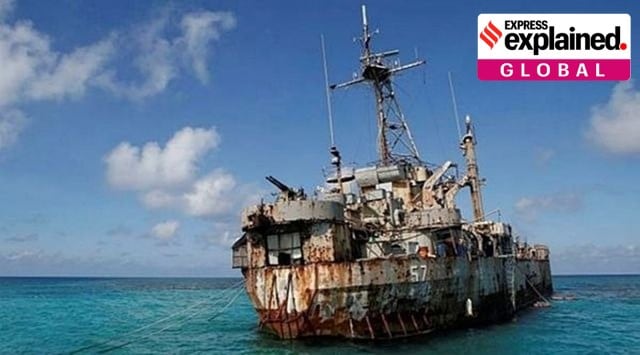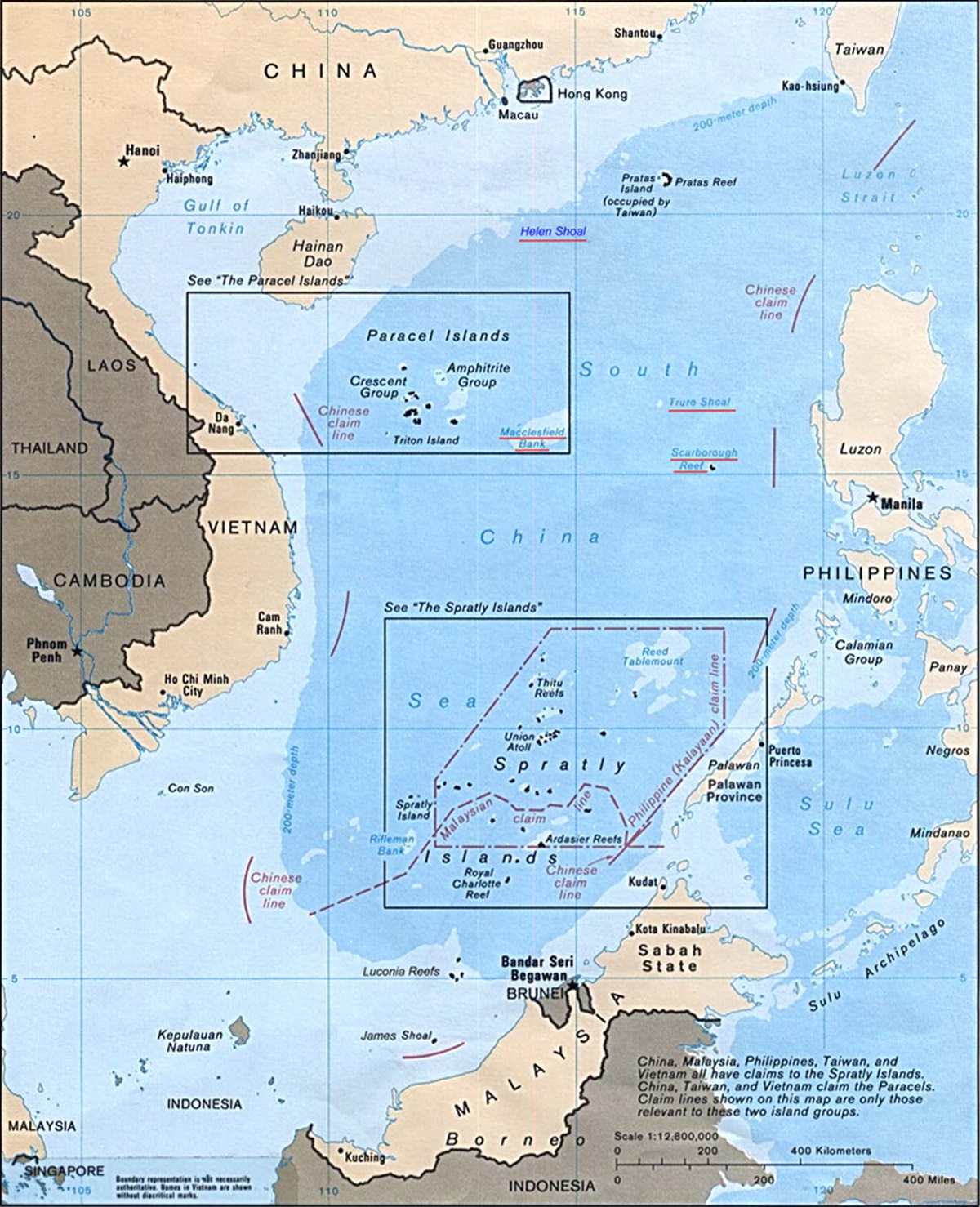- India
- International
What is Sierra Madre, an old ship fuelling China-Philippines tensions in South China Sea?
In 1999, the Sierra Madre was left on the Second Thomas Shoal, which is a part of the mostly uninhabited Spratly islands in the South China Sea. China has demanded the ship’s removal in the past – something the Philippines has rejected.
 The BRP Sierra Madre, a marooned transport ship which the Philippines' Marines live on as a military outpost, is pictured in the disputed Second Thomas Shoal, part of the Spratly Islands in the South China Sea March 30, 2014. (Reuters file)
The BRP Sierra Madre, a marooned transport ship which the Philippines' Marines live on as a military outpost, is pictured in the disputed Second Thomas Shoal, part of the Spratly Islands in the South China Sea March 30, 2014. (Reuters file)Countries such as China, the Philippines, Malaysia, Vietnam and Brunei Darussalam have long been making competing claims over regions of the South China Sea. Of late, the Philippines and China in particular have clashed in the region, raising concerns about an escalation. An important part of this equation is Sierra Madre, a World War II-era ship.
In the 1990s, the Philippines decided to bring this ship to the Second Thomas Shoal, a submerged reef located in the South China Sea. The placement of the ship was deliberate, in order to further its territorial claims. Since then, the Philippines has sent smaller boats to the ship for repairs, and sending supplies to the crew onboard.
A recent analysis by The Washington Post, based on ship-tracking data and videos, found that “Chinese coast guard and militia ships have repeatedly swarmed and collided with Philippine resupply vessels”. China was also found to have increased the deployment of its ships and directed water cannons at Filipino boats during supply missions to the Sierra Madre.
How does the ship figure in the larger claims in the region? We explain.
First, what is the Sierra Madre?
The 100 ft-long Sierra Madre was constructed in the US for World War II (1939-45) and commissioned in 1944 as a landing ship. Subsequently, it was sent to Vietnam during the US participation in the Vietnam War (1954-75). In 1976, it was transferred to the Philippines, an ally of the US.

In 1999, it was left on the Second Thomas Shoal, which is a part of the mostly uninhabited Spratly islands. A few years ago, China had laid claims on the nearby Mischief Reef. The move was an attempt at halting further Chinese assertions.
China has since demanded the ship’s removal – something the Philippines has rejected. Today, the ship is largely dilapidated and rusting. However, for the Philippines, its removal would risk weakening its claims over the islands and Chinese presence being established.
 Map of the South China Sea. (Via Wikimedia Commons)
Map of the South China Sea. (Via Wikimedia Commons)
What is the battle over Spratly islands?
All countries bordering the sea have certain rights to access marine resources. An exclusive economic zone (EEZ) is an area of the ocean extending 200 nautical miles (370 km) beyond a nation’s territorial sea (12 nautical miles or 12 miles from the coast).
Within this area, a coastal nation has jurisdiction over both living and nonliving resources, according to the US National Oceanic and Atmospheric Administration (NOAA).
For decades, countries in the region have extended overlapping claims on the South China Sea, claiming ownership over islands located there – such as the Spratly islands and the Paracel islands. Along with issues over sovereignty, the rich oil and gas reserves in the region and its rich fishing waters have also encouraged countries to lay their claims.
According to the Associated Press, the disputes “gradually escalated under former Philippine President Benigno Aquino III and culminated in 2012 when China took effective control of the disputed Scarborough Shoal after a tense standoff.”
The following year, Xi Jinping became the Chinese President. Under his rule, China has assumed a hardened stance on territorial claims and attempted aggressive posturing. It has claimed 90% of the South China Sea.
In 2016, an international tribunal in The Hague ruled in favour of the Philippines by noting China’s activities in the dispute. Although the decision did not award sovereignty to any party, it said, “The Tribunal found that it could—without delimiting a boundary—declare that certain sea areas are within the exclusive economic zone of the Philippines, because those areas are not overlapped by any possible entitlement of China”.
It also pointed to China’s construction of artificial islands with helipads and buildings was “incompatible with the obligations on a State during dispute resolution proceedings, insofar as China has inflicted irreparable harm to the marine environment, built a large artificial island in the Philippines’ exclusive economic zone, and destroyed evidence of the natural condition of features in the South China Sea that formed part of the Parties’ dispute.”
China rejected the ruling.
What has the US response been like?
Since 2022, under the presidency of Ferdinand ‘Bongbong’ Marcos Jr, the Philippines has also struck back against Chinese action in the region. Last month, the Philippines summoned China’s deputy chief of mission in response to its naval forces’ “aggressive actions” against a resupply mission.
The US, which regards The Philippines as an important strategic ally, also voiced its support. In May 2023, the two countries also agreed on new guidelines to a defence treaty from 1951.
It originally said the parties recognised “that an armed attack in the Pacific Area on either of the Parties would be dangerous to its own peace and safety and each party agrees that it will act to meet the common dangers in accordance with its constitutional processes.”
Pentagon said in 2023: “The guidelines reaffirm that an armed attack in the Pacific, including anywhere in the South China Sea, on either of their public vessels, aircraft, or armed forces – which includes their Coast Guards – would invoke mutual defense commitments under Articles IV and V of the 1951 U.S.-Philippines Mutual Defense Treaty.”
This year too, when Marcos Jr met US President Joe Biden during a visit in early April, US Defense Secretary Lloyd Austin said Washington stood with Manila against “coercion.”
More Explained
EXPRESS OPINION
May 21: Latest News
- 01
- 02
- 03
- 04
- 05






























